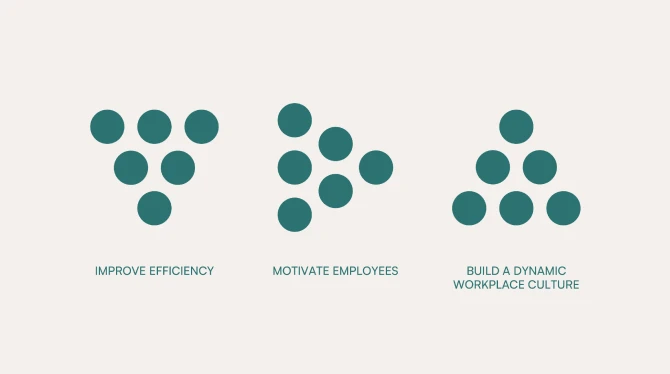🔦
Opportunities And Risks Of Full Brand Control In D2C E-Commerce Businesses
LAST UPDATED 16 May, 2024
The evolution from traditional to modern business models, especially in the context of D2C e-commerce, marks a significant shift in how businesses approach and engage with their customers. In the traditional model, businesses rely heavily on direct, personal interactions and physical storefronts to build their brands, while the D2C business model approach is less personal and relies more on customers choosing their own way to interact with a brand.
Traditional vs. D2C Business Models

The traditional model prioritizes face-to-face contact and a hands-on approach to customer service, reflecting a time when brand loyalty was often built through repeated personal interactions. You know Mary at your local gift shop, and Mary always helps you pick the best candlestick or silverware for your mother-in-law.
In contrast, the modern D2C e-commerce model, leans towards digital-first strategies, emphasizing the self-onboarding, self-checkout process. This approach caters to a younger age segregation that values convenience, speed, and autonomy in their purchasing decisions.
The modern consumer expects to interact with a brand through a seamless online experience, from discovery and research to purchase and post-purchase support. We can see the D2C model finding it’s way into the traditional model with self-checkout cash registers in grocery stores and retail.

The digital-centric model allows full control of a brand, reaching a wider audience more efficiently and collecting more precise data to leverage for personalized marketing.
It fosters brand loyalty through online communities and content, reflecting a broader shift towards valuing customer experience and engagement.
Comparing these two models, each offers its unique benefits but also implies risk.1
Within the traditional model, multiple stakeholders are involved in the process of selling your product. They can all have an effect on the way your brand is perceived. This means less control when it comes to consumer brand experience.
With large and well-established brands, the traditional way of product distribution might be a necessary route, making control of the brand even more important… and more difficult. Trends in the past decade show a massive pivot towards the D2C e-commerce2 where established brands like Adidas, Patagonia, The North Face, etc. have adopted the D2C model, indicating the increasing importance of online presence, ecomm, and therefore good branding.3

For startups and small businesses on the other hand, the D2C model might be the only option. This model offers full control of the brand, but the more control you have, the more risk there is.
Risks Of The D2C Model In E-Commerce
High-level building blocks of a D2C e-commerce business involve a deep dive into each component to understand its significance and how it contributes to the overall success of the brand. Below is a boilerplate item list of building blocks for a D2C e-comm business:
- Product Development
- Manufacturing
- Marketing & Sales
- Fulfillment
- Customer Service
- Partnerships
Each of these building blocks needs to have a team around them in order to keep the brand experience consistent and continually increase the experience quality for customers. Handling this kind of operational and organizational workload implies risk from a managerial perspective.
Making the business work like a well-oiled machine to capture a significant market percentage creates pressure, therefore demanding the right support and know-how from C-level executives top-down.
In order to get to this point, three key factors are in play that can help ensuring a healthy long-term trajectory, considering proof of concept and product market fit4 have been achieved.

Each of these three groups: Top leadership commitment, Customer first choices, and Digital talent involve planning, commitment, and funding. Setting them up as early as possible can be key for your D2C e-comm business success.
The main risk here is creating a good balance between steadfastness and compromise when decision making. Posing the questions: which assets to work on first? who to hire first? in which area should the team be educated first? which partnerships are a priority?
All of these questions have no right or wrong answer and should be prioritized based on whether they are easy to achieve—these go first—or hard to achieve—these go last. Again, there is no wrong or right answer, but their outcomes can greatly affect how quickly your business will succeed or fail.
Often founders of D2C e-comm businesses develop products drawing from years of experience working within a single industry. Developing the product is the first stepping stone, the risk here is having the necessary know-how and tools to build a business that has full brand control, making the key difference between building a business that excels and one that is mediocre.
Opportunities With Full Brand Control
Let’s assume you’re a superhuman who’s killing it and you’ve set up all of these building blocks properly. How do you capitalize on your effort?
Achieving full brand control in the D2C model offers your business a wealth of opportunities to distinguish itself in a competitive landscape. This level of control facilitates a direct and deeper engagement with customers, fostering stronger relationships and loyalty. It also grants you the agility to innovate rapidly, adapting to market trends and customer feedback.
Furthermore, having full brand control enables you to tailor every aspect of the customer experience, from personalized marketing to unique packaging, creating memorable moments that enhance customer satisfaction and brand perception.
Some key opportunities that come with full brand control are:
- Enhanced customer relationships
- Tailored customer experiences
- Data-driven decision making
- Increased revenue opportunities
- More control over profit margins
- Consistency in visual branding and messaging
- Greater market responsiveness
Even a simple thing like discount management, product bundling, or an updated offering can be a hassle with many stakeholders involved in the process of selling the product.
Full brand control empowers D2C brands to exceed customer expectations, driving growth and establishing a lasting market presence. Through strategic use of this control, you can leverage innovation, personalization, and efficiency to create a unique and compelling brand identity.
Control Over Full Brand Control
Successfully achieving full brand control involves a lateral, syncronized, and interlaced set of activities between all building blocks.
Setting up brand standards or guidelines enables you to set the course for/create a filter to ensure all team members are aligned with the company’s vision and mission.
Brand guidelines are not just a set of rules for brand presentation, they ensure that every aspect of the brand, from visual design to voice and messaging, is consistent and reflective of the brand’s core values and identity.
This consistency is key to building a recognizable and trusted brand that resonates with consumers. For D2C e-commerce businesses aiming to carve out a distinctive space in the digital marketplace, investing in the development and enforcement of brand standards is essential for long-term success and customer loyalty.
For example, you can develop the best products, create awesome packaging, build a website that perfectly explains the product, have a competitive price, but fail at customer service; chances are that you get a bunch of bad reviews and your revenue takes a hit, only because you’ve missed to work on the verbal side of your branding or you haven’t secured proper training for your customer service team.
Full brand control puts it all in your hands, which means that all contact points with customers need to be covered at a similar level of experience, preferably the highest level possible with the available resources at your disposal.


